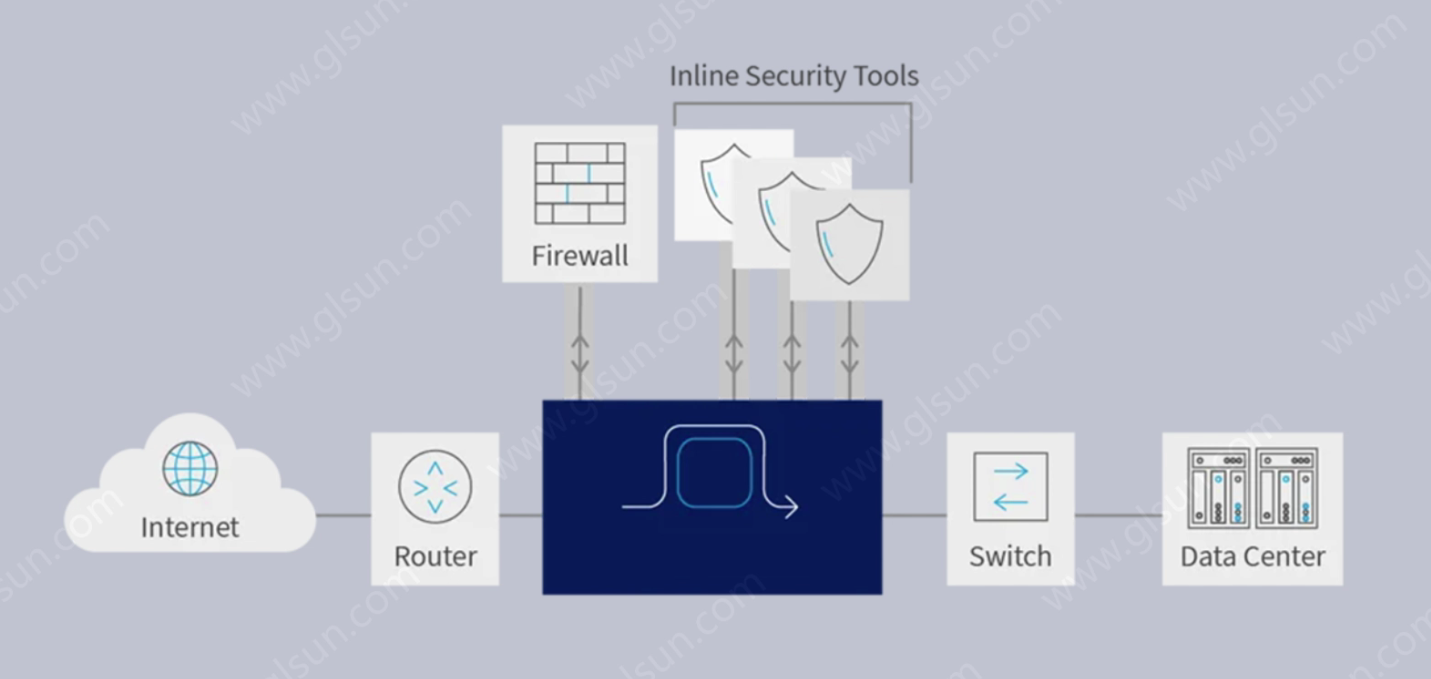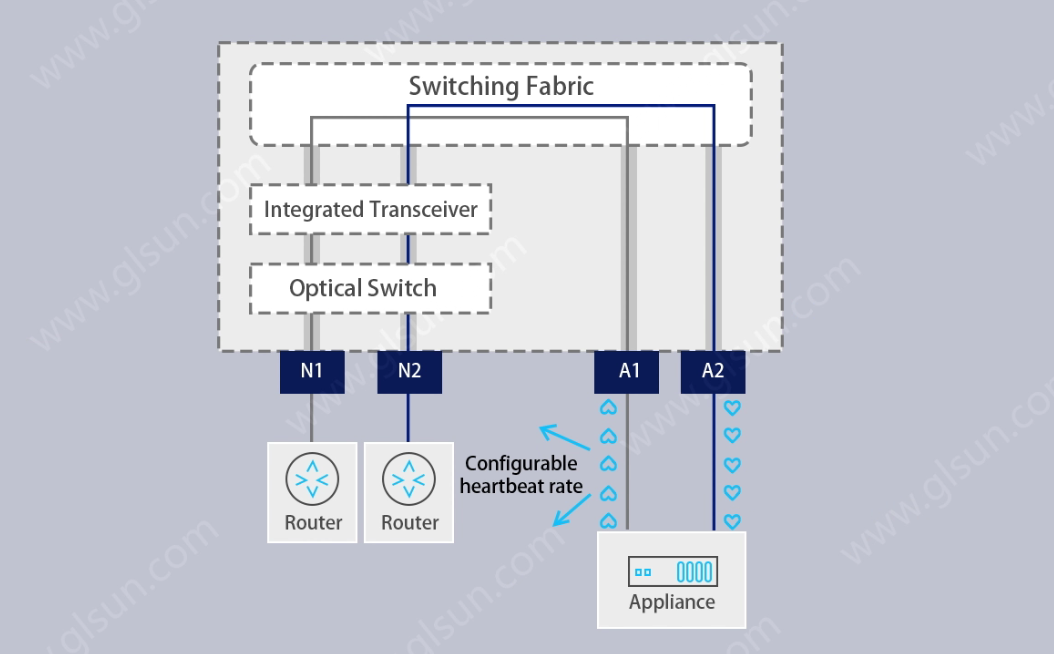Why Are Optical Bypass Modules Essential in Inline Security Systems?
2025-06-07
In today's hyper-connected world, network security and uptime are two paramount concerns for enterprises and service providers. As the demand for real-time data transfer, secure communications, and reliable connectivity increases, so too does the reliance on robust network infrastructure. Inline security systems—comprising firewalls, intrusion prevention systems (IPS), deep packet inspection (DPI) devices, and other threat detection mechanisms—form a vital part of this architecture. However, placing security appliances directly in the path of network traffic introduces a potential single point of failure. This is where optical bypass modules become indispensable.
An inline security system operates by placing security appliances directly in the data path. All network traffic must pass through these appliances for monitoring, filtering, or policy enforcement. While this ensures comprehensive visibility and control, it also means that any failure or maintenance requirement of the inline device can cause traffic interruption or total service outage.
Inline architectures are especially common in high-bandwidth fiber optic environments where data integrity and security cannot be compromised. Unfortunately, a traditional inline design without fail-safe mechanisms is inherently brittle. Even a short disruption can lead to significant data loss, dropped sessions, or complete network downtime.
What is an Optical Bypass Module?
An optical bypass module is a passive or active device installed alongside inline security appliances in fiber optic networks. It provides an intelligent and automated fail-safe route that ensures continuous traffic flow, even if the inline device becomes unavailable.
Optical fiber bypass modules are engineered to detect appliance failures—typically through heartbeat signals—and reroute traffic accordingly. This redirection can be temporary (until the device comes back online) or persistent (in the case of hardware replacement or extended downtime).
These modules operate at line-rate speeds with minimal latency, ensuring they do not become performance bottlenecks. Their integration is seamless, transparent to the network, and highly reliable.

Why Optical Bypass Modules Are Essential
1. Ensuring Network Resilience
At its core, a bypass module acts as an insurance policy against unexpected failures. By automatically bypassing failed security appliances, these modules prevent the failure from escalating into a full-blown network outage. In mission-critical environments such as financial services, healthcare, or data centers, even a few seconds of downtime can have massive implications.
2. Enabling High Availability
High availability is a foundational principle of modern network design. Optical bypass modules ensure that networks meet or exceed uptime requirements by eliminating the risk of single points of failure. With these modules in place, organizations can confidently deploy inline security solutions without sacrificing availability.
3. Facilitating Maintenance and Upgrades
Scheduled maintenance is inevitable, but it shouldn't disrupt services. Optical bypass modules allow security appliances to be removed or rebooted without interrupting the data path. This is especially important in environments that operate around the clock, such as cloud service providers or telecom operators.
4. Reducing Operational Risk
Security appliances can experience software bugs, hardware malfunctions, or configuration errors. With a bypass module, these risks are mitigated. Should an appliance fail, traffic continues to flow uninterrupted, allowing IT teams time to diagnose and address the problem without pressure from service disruptions.
5. Supporting Scalability and Flexibility
As networks grow and evolve, the security infrastructure must adapt. Optical bypass modules offer flexibility to add, remove, or change inline appliances with minimal risk. This modular approach supports rapid deployment of new technologies and simplifies testing in live environments.
6. Optimizing Performance
Some bypass modules can be integrated with network packet brokers or traffic steering solutions, allowing for intelligent routing. This enables optimized load balancing across multiple inline devices, ensuring no single appliance becomes overwhelmed.
Technical Features of Optical Bypass Module
Modern optical bypass modules incorporate several advanced features to enhance their utility:
- Heartbeat Monitoring: Regular signal checking to determine the health of the inline appliance.
- Auto-Switching: Instantaneous switching between inline and bypass modes upon failure detection.
- Manual Override: Allows administrators to bypass an appliance during scheduled maintenance.
- Fail-Safe Design: In case of power loss, the module defaults to bypass mode to maintain connectivity.
- Multi-Speed Compatibility: Supports various data rates (1G, 10G, 40G, 100G) and multimode/single-mode fiber types.
- Low Insertion Loss: Maintains signal integrity across the module.

Use Cases in Optical Networking
Optical bypass modules are widely used in environments where fiber optic connectivity is essential:
- Telecommunications Networks: Ensuring continuous service in nationwide and metro-area optical networks.
- Data Centers: Maintaining uptime for cloud computing and storage services.
- Enterprise Networks: Supporting business-critical applications with zero-downtime security.
- Financial Services: Providing uninterrupted connectivity for trading platforms and secure transactions.
- Healthcare: Securing sensitive patient data without compromising service availability.
Optical bypass modules are not merely optional add-ons in modern inline security systems—they are essential components that enable high availability, reduce operational risk, and support seamless network scalability. As cyber threats grow more sophisticated and the demand for uninterrupted service intensifies, network operators must adopt fail-safe technologies that ensure resilience.
By integrating optical fiber bypass modules into your fiber optic infrastructure, you not only safeguard traffic flows during appliance failures or maintenance but also future-proof your network for the challenges ahead.
In a world where downtime is costly and unacceptable, optical bypass modules provide the assurance that your security strategy will never compromise your connectivity.







